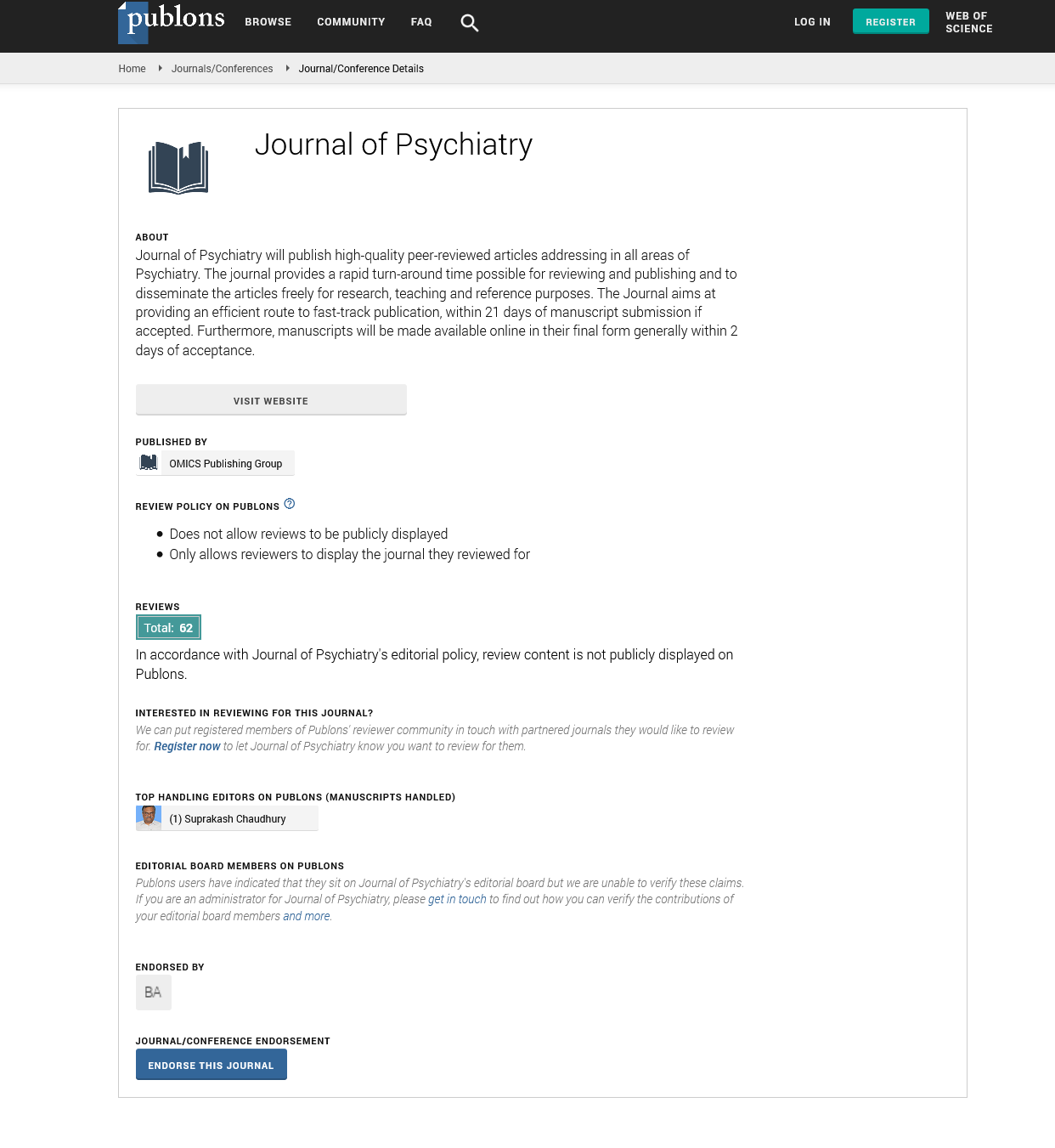Indexed In
- RefSeek
- Hamdard University
- EBSCO A-Z
- OCLC- WorldCat
- SWB online catalog
- Publons
- International committee of medical journals editors (ICMJE)
- Geneva Foundation for Medical Education and Research
Useful Links
Share This Page
Open Access Journals
- Agri and Aquaculture
- Biochemistry
- Bioinformatics & Systems Biology
- Business & Management
- Chemistry
- Clinical Sciences
- Engineering
- Food & Nutrition
- General Science
- Genetics & Molecular Biology
- Immunology & Microbiology
- Medical Sciences
- Neuroscience & Psychology
- Nursing & Health Care
- Pharmaceutical Sciences
Abstract
Doctor to Patient Ratio and Infrastructure Gap in a Psychiatric Hospital in Oil Rich Eket, Nigeria
Uche Adolphus Nwaopara
Background: In an oil rich city, profound shortfalls in the human resources and basic infrastructure, needed for adequate mental health care is dehumanizing and unacceptable.
Aims: To bring to global attention, the population-provider ratio, the wide mismatch between the doctors and infrastructure available to patients and the implications of such mental health gap.
Method: In this cross sectional retrospective study, 870 patients who presented to the center over a 3-month period (May-July) were reviewed. The Federal Ministry of Health, National Health management Information System, Health Facility Daily Attendance Register (Version 2013) was used to review the patients in terms of outpatient, inpatient, specialist medical care and outcome. The Hospital Inpatient Facilities Checklist (for Psychiatric Units), was used to access the level of facilities and compliance to standards at this center. Data analysis was done using SPSS Version 17.
Results: In a 74-bed hospital, there were 6 (8.1%) beds, leaving a shortfall of 68 (91.9%) beds with bed to population ratio of 3:100,000 (critical bed shortage, <12 per 100,000), with many patients lying on the bare floor. The bed to population ratio was 3:100,000. The doctor/patient ratio was 1:870 (One Psychiatrist) or 1:435 (medical officer + psychiatrist) and a psychiatrist to population ratio of 0.48 per 100,000. Psychiatric presentations were commoner among females 51.4%. The most prevalent psychiatric disorder was Schizophrenia with 401 (46.09%) patients. The prevalence of Mental and Behavioral disorder was 9.08 (9.1%). Other factors were no toilet facilities, laundry services with huge public health implications.
Conclusions: Research findings show resource gaps. This mismatch of disease burden with extant resources is evidence of failure in systemic health delivery and failure of corporate social responsibility. A reversal of this ugly trend will help to improve efficiency in service delivery as well as optimize patient care and reduce the treatment gap.

